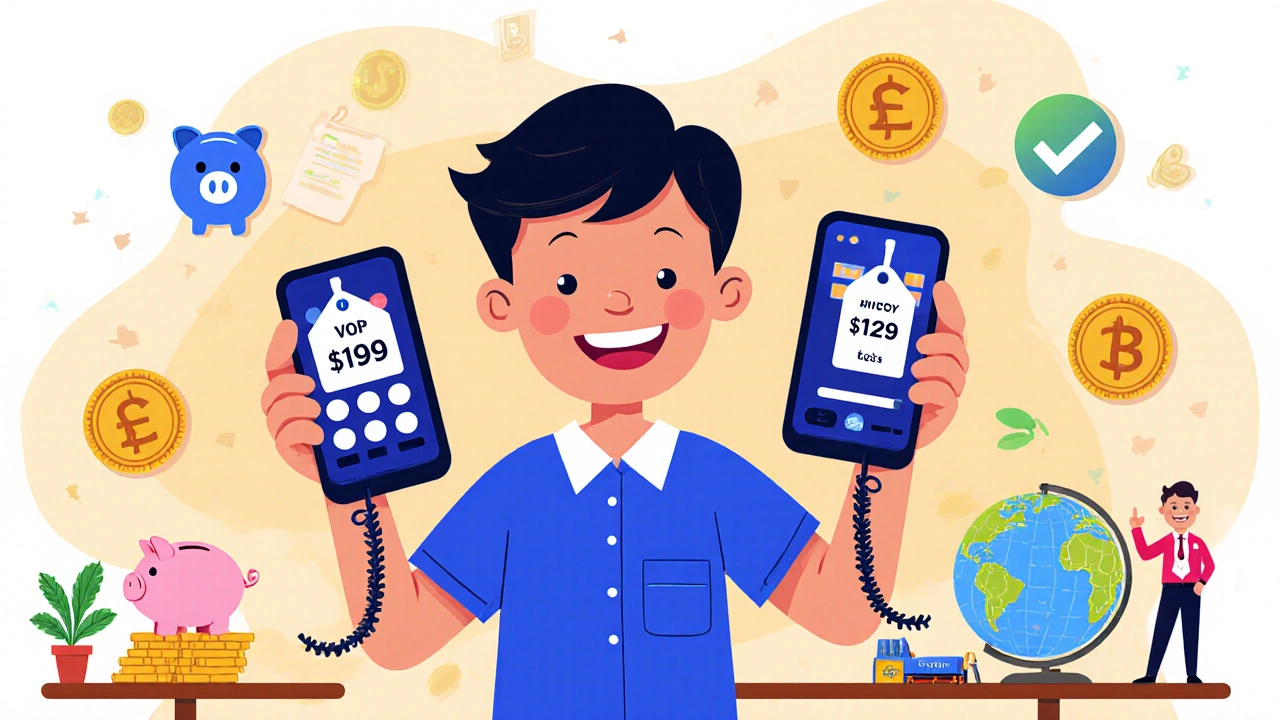Voice over IP (VoIP) cost savings: How internet calling slashes your phone bill
When you switch to Voice over IP, a technology that sends voice calls over the internet instead of traditional phone lines. Also known as IP telephony, it’s not just a trendy upgrade—it’s the reason thousands of businesses and households are canceling their landlines. The math is simple: if your old phone system costs $100 a month, a good VoIP plan might run $20. But here’s the catch—most people don’t realize how much they’re really saving until they see the full picture.
True VoIP cost savings come from cutting out middlemen. Traditional phone companies charge for local, long-distance, and international calls like they’re selling bottled water in a desert. VoIP? It treats all calls the same—whether you’re calling next door or next week in Manila. That’s why travelers save up to 90% using VoIP apps with local numbers abroad. It’s not magic. It’s infrastructure. Your call travels as data, not through copper wires owned by a monopoly. And when you compare cloud VoIP, a phone system hosted online with no on-site hardware. Also known as hosted PBX, it eliminates the need for expensive phone boxes, wiring, and IT staff. versus old-school premises-based systems, the five-year savings jump to 50–75%. That’s not a guess. It’s from real TCO breakdowns where businesses tracked everything: hardware, maintenance, upgrades, and even power bills.
But savings aren’t automatic. Hidden fees can eat away at your gains. Recording, CRM integrations, international minutes, and even basic hardware like SIP phones often come with surprise charges. One company thought they were paying $19 per user—until they added up the add-ons and realized they were paying $38. That’s why understanding TCO comparison, the total cost of owning a phone system over time, including all direct and indirect expenses. Also known as total cost of ownership, it’s the only way to know if you’re really saving. matters. You’re not just buying a phone service—you’re investing in a system that needs to scale, stay secure, and avoid toll fraud. And that’s where things like least privilege access, SIP authentication, and proper network setup become part of your cost equation.
What you’ll find below isn’t fluff. These aren’t marketing posts from VoIP vendors trying to sell you a $500 phone. This is a collection of real, tested insights—from churches cutting phone bills to remote teams using virtual receptionists, from schools replacing outdated paging systems to travelers ditching roaming charges. You’ll see how call tagging helps sales teams close more deals without spending more, how ATA adapters let you reuse old phones during PSTN shutdowns, and why 20ms packetization is still the sweet spot for quality and bandwidth. Every article here answers one question: how do you actually save money—without sacrificing reliability, security, or call quality?

